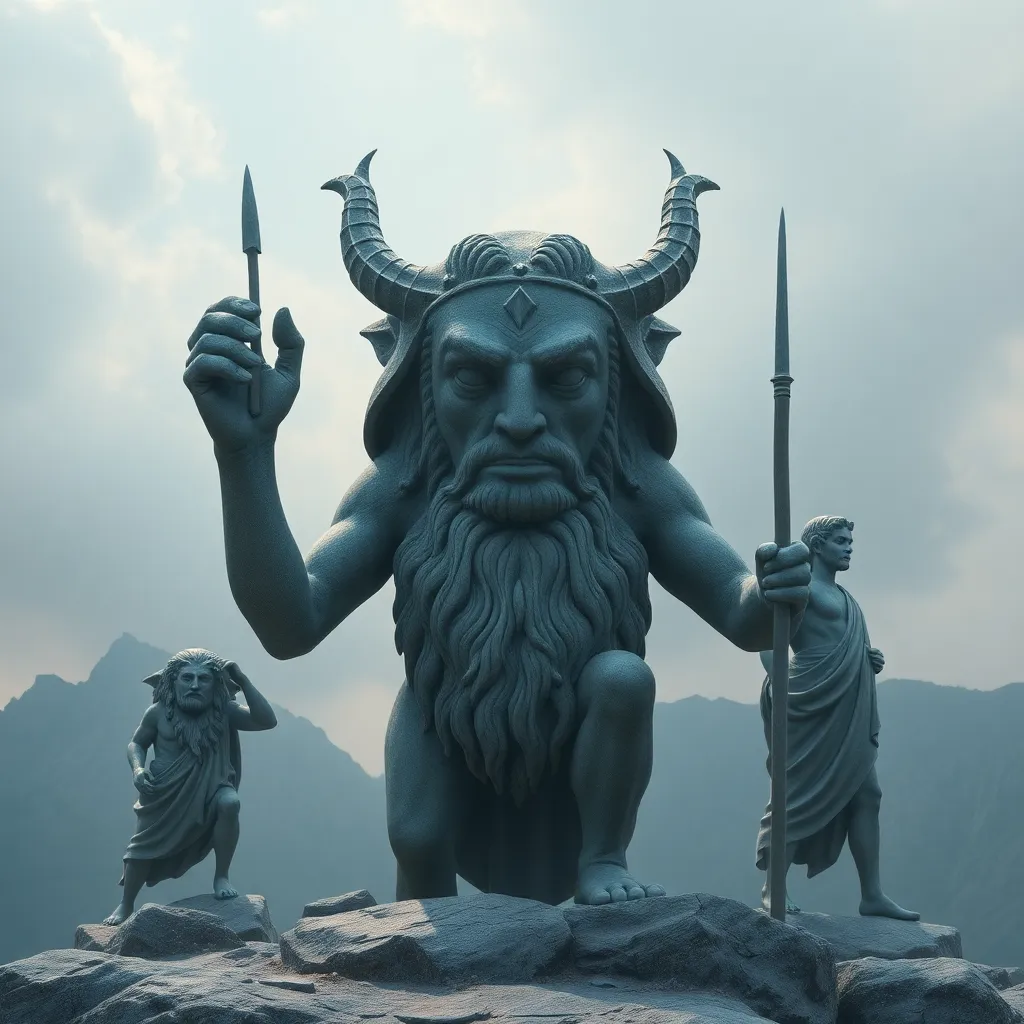The Cyclops and Their Connection to the Gods of Olympus
I. Introduction
The Cyclops, the one-eyed giants of Greek mythology, capture the imagination with their unique physical attributes and formidable presence. Often depicted as brutish and uncivilized, they are nonetheless significant figures in the mythological landscape of ancient Greece. Their connection to the Olympian gods adds layers of complexity to their character, illustrating themes of power, craftsmanship, and the human condition. This article aims to explore the origins, roles, and modern interpretations of the Cyclopes, shedding light on their enduring legacy in mythology.
II. The Origins of the Cyclops in Greek Mythology
The Cyclopes are characterized by their singular eye, located in the middle of their foreheads. These beings are often described as gigantic and hairy, embodying a raw, primal strength. In ancient texts, they are depicted as both fearsome monsters and skilled artisans, showcasing a duality that makes them intriguing figures in mythology.
Historically, references to the Cyclopes appear in several ancient texts, most notably in Hesiod’s “Theogony,” where they are described as the offspring of Gaia (Earth) and Uranus (Sky). These early texts suggest that Cyclopes were not merely monstrous beings but were integral to the fabric of the cosmos.
Theories regarding the origins of the Cyclopes often revolve around their representation of natural phenomena, such as volcanic activity. Their association with the forge and craftsmanship may symbolize the transformative power of nature, reflecting the ancient Greeks’ reverence for the earth and its raw materials.
III. The Cyclops and Their Role in Homeric Epics
One of the most famous depictions of the Cyclopes is found in Homer’s “The Odyssey.” In this epic, Odysseus encounters Polyphemus, a Cyclops who lives in a cave and tends to his flock of sheep. This encounter serves as a pivotal moment in the narrative, highlighting themes of cunning versus brute strength.
Polyphemus is portrayed as both a fearsome giant and a tragic figure. His interactions with Odysseus are marked by a mix of hospitality and violence, ultimately leading to his downfall. Odysseus cleverly blinds Polyphemus to escape, a moment that symbolizes the triumph of intellect over physical power.
The symbolism of the Cyclops in “The Odyssey” reflects the hero’s journey. The encounter with Polyphemus represents the trials and tribulations that Odysseus must navigate to return home, emphasizing the importance of wit and strategy in overcoming adversity.
IV. The Cyclops as Divine Craftsmen
Beyond their monstrous appearances, the Cyclopes are also recognized as divine craftsmen. In Hesiod’s accounts, they are credited with forging powerful weapons for the gods, including Zeus’ thunderbolt, Poseidon’s trident, and Hades’ helmet of invisibility. This role as artisans positions them as essential figures in the pantheon of Greek mythology.
The forging of Zeus’ thunderbolt is particularly significant, as it symbolizes divine authority and power. The Cyclopes’ craftsmanship demonstrates their integral role in maintaining the balance of power among the gods. Their abilities as smiths parallel other mythological craftsmen, such as Hephaestus, who also creates divine weapons and tools.
V. The Cyclops and Their Relationship with the Gods
The Cyclopes are often depicted as offspring of Gaia and Uranus, which places them in a primordial lineage connected to the very foundation of the world. Their allegiance to the gods, particularly Zeus, is a key aspect of their identity. After being freed from Tartarus by Zeus, they become his allies and contribute to the Titanomachy, the war between the Titans and the Olympians.
Instances of conflict and cooperation between the Cyclopes and the Olympians highlight their complex relationships. While they may be feared for their brutish nature, their loyalty and craftsmanship earn them a place among the divine. This duality raises questions about the nature of power and the relationships between different beings in the mythological hierarchy.
VI. The Cyclops in Ancient Greek Culture
The representation of the Cyclopes in ancient Greek art and literature varies widely. They appear in pottery, sculptures, and later literary works, often depicted as formidable giants. The cultural significance of the Cyclopes extends beyond their appearances; they embody themes of strength, craftsmanship, and the unpredictability of nature.
In ancient Greek society, Cyclopean themes resonated with the public’s understanding of the natural world. They represented the untamed aspects of nature that could be both awe-inspiring and terrifying. The influence of Cyclopean myths extends into later mythology and folklore, where one-eyed giants appear in various forms, signifying the lasting impact of these ancient tales.
VII. Modern Interpretations and Adaptations
In contemporary literature and media, the Cyclopes have been reimagined in numerous ways. From films to novels, their portrayal has evolved, often reflecting modern values and concerns. For instance, adaptations may focus on the Cyclopes as misunderstood creatures, exploring themes of isolation and humanity.
Modern interpretations often draw parallels between the Cyclopes and contemporary issues, such as the struggle for identity and acceptance. These narratives resonate with audiences, showcasing the Cyclopes as symbols of resilience and strength in the face of adversity.
VIII. Conclusion
The Cyclopes, with their multifaceted connections to the gods of Olympus, offer rich insights into ancient Greek beliefs. Their roles as both fearsome giants and skilled craftsmen illustrate the complexities of power, loyalty, and the nature of existence. Through their stories, we gain a deeper understanding of the values and fears that shaped ancient Greek culture.
In reflection, the enduring legacy of the Cyclopes in modern storytelling underscores their relevance in contemporary society. As we continue to explore these ancient myths, we uncover timeless themes that resonate across generations, ensuring that the Cyclopes remain a significant part of our cultural imagination.




